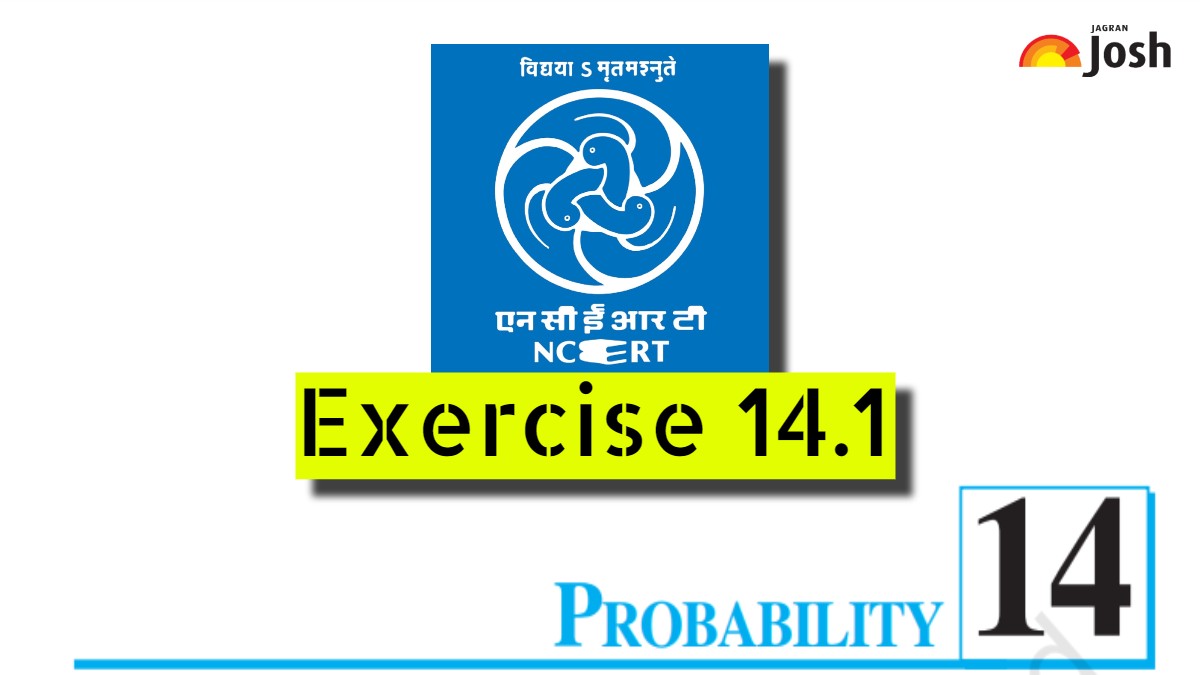Exercise 14.1 Class 10 Maths NCERT Solutions: Probability in Maths Class 10 introduces students to the possibility of events occurring. Understanding theoretical probabilities, experimental results, and ratios are all necessary. Through the use of basic and complex probability calculations, students acquire the capacity to assess and predict results, developing analytical reasoning abilities and the practical implementation of mathematical ideas.
Here, students will get the NCERT Solutions for Class 10 Probability, Ex 14.1. There has been a reduction in the content of this chapter, which left only one exercise to complete. All NCERT solutions for Class 10 Maths Exercise 14.1 are given below in PDF format for easy download. These NCERT solutions for Class 10 Maths Ex 14.1 are important from the final board exam perspective.
NCERT Solutions for Class 10 Maths Exercise 14.1
You can see the NCERT questions for Class 10 Maths Probability Chapter 14 below with all the appropriate answers. The complete solution guide is provided in the PDF that is attached to the link below.
Question 1: Complete the following statements:
(i) Probability of an event E + Probability of the event ‘not E’ = .
(ii) The probability of an event that cannot happen is . Such as event is called
(iii) The probability of an event that is certain to happen is . Such as event is called .
(iv) The sum of the probabilities of all the elementary events of an experiment is .
(v) The probability of an event is greater than or equal to and less than or equal to .
Solution:
(i) 1
(ii) 0, impossible event
(iii) 1, sure event or certain event
(iv) 1
(v) 0, 1
Question 2: Which of the following experiments have equally likely outcomes? Explain.
(i) A driver attempts to start a car. The car starts or does not start.
(ii) A player attempts to shoot a basketball. She/he shoots or misses the shot.
(iii) A trial is made to answer a true-false question. The answer is right or wrong.
(iv) A baby is born. It is a boy or a girl.
Solution:
(i) It is not an equally likely event, as it depends on various factors such as whether the car will start or not.
(ii) It is not an equally likely event, as it depends on the player’s ability.
(iii) It is an equally likely event.
(iv) It is an equally likely event.
Question 3. Why is tossing a coin considered to be a fair way of deciding which team should get the ball at the beginning of a football game?
Sol. When we toss a coin, the possible outcomes are only two, head or tail, which are equally likely outcomes. Therefore, the result of an individual toss is completely unpredictable.
Question 4: Which of the following cannot be the probability of an event?
- 2/3
- -1.5
- 15 %
- 0.7
Solution: The probability of an event is always greater than or equal to 0. Also, it is always less than or equal to one. This implies that the probability of an event cannot be negative or greater than 1. Therefore, −1.5 cannot be a probability of an event.
Hence, (B)
The answers to the above questions and many others of exercise 14.1 Maths Class 10 are provided in the link below. Click on the link below and download the PDF.
